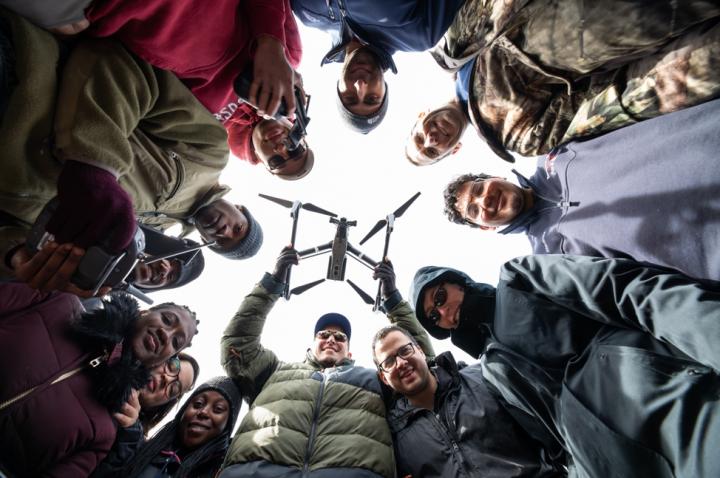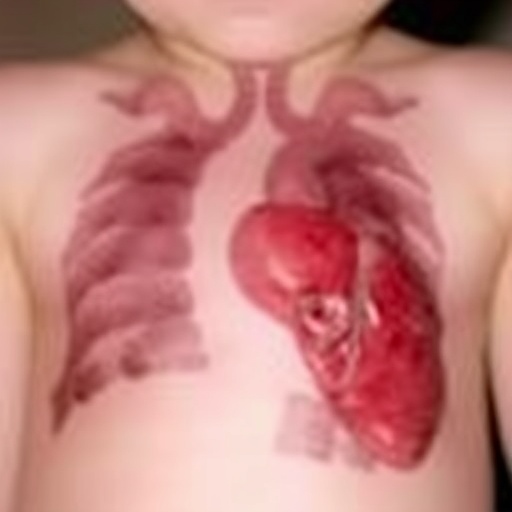
Credit: Peter Means for Virginia Tech
Many great scientific collaborations have existed throughout history: Katherine Johnson, Dorothy Vaughan, and Mary Jackson did the mathematical calculations and equations that launched satellites into space; Rosalind Franklin and Maurice Wilkins took the first high-resolution photographs of DNA using X-ray crystallography; and Swami Vivekananda and Nikola Tesla made great strides in the understanding of cosmology and physics, to name a few.
With a $1.2 million grant from the National Science Foundation (NSF), David Schmale, a professor in the School of Plant and Environmental Sciences in the College of Agriculture and Life Sciences, and Shane Ross, a professor in the Kevin T. Crofton Department of Aerospace and Ocean Engineering in the College of Engineering, aim to provide the tools for the next generation of scientists that will tackle big data sciences challenges. Both Schmale and Ross are affiliated faculty members of the Fralin Life Sciences Institute at Virginia Tech.
Schmale and Ross plan to launch an NSF Harnessing the Data Revolution: Data Science Corps (HDR DSC) program at Virginia Tech, which offers opportunities to underserved biology and engineering undergraduate students — students who are able to bring their own perspectives to the field of data science.
This three-year program will include undergraduate engineering and biology students from Virginia Tech and partnering colleges, such as Morehouse College, an all-male historically Black college and university (HBCU) in Georgia; Morgan State University, an HBCU in Maryland; Bennett College, an all-female HBCU in North Carolina; and Hampden-Sydney College, an all-male college in Virginia.
Recently, Virginia Tech has invested more time and energy into increasing experiential learning and diversity on and off campus. This program is bound to be a crucial next step.
“A lot of the technology and resources that we have here at Virginia Tech are just not available at other institutions,” Schmale said. “We can leverage our resources to provide unique opportunities for underserved students. I had such a rich experience as an undergraduate at the University of California, Davis. Now, it’s time to pay it forward with this new undergraduate data sciences program that will provide unique research opportunities for undergrads from multiple universities.”
In the fall of 2020, Schmale and Ross will co-teach a capstone course titled Data and Decisions at the Engineering/Biology Interface on the Virginia Tech campus. Students from partnering colleges will take the class online, where they can learn and interact in real time.
Students will engage with the Computational Modeling and Data Analytics Program, and will be integrated into the Data and Decisions Destination Area, an area of focus that touches all of the units, colleges, and departments at Virginia Tech.
Students will work in multi-university teams toward addressing a pressing need, identified from participating stakeholders, with each team embodying an array of scientific and engineering expertise. Once a problem has been identified and laid out, student teams will submit their ideas and some will be selected for a data collection field campaign the following summer, based out of Virginia Tech.
However, this will not be Schmale and Ross’s first data science-driven field campaign. Last March, they hosted a mini field campaign at Virginia Tech that brought six undergraduate students from Morehouse, Bennett, and Hampden-Sydney to dive deeper into data and decisions research.
With this being the first time that Morgan State University has collaborated on this project, Birol Ozturk, an assistant professor in the Department of Physics, is excited to see how his students will benefit from this new experience.
“We are very excited to participate in this new project at Virginia Tech. I have previously worked on a similar project, where we were able to offer courses at Morgan State University for the first time in collaboration with other universities and we wouldn’t be able to offer them otherwise. I look forward to contributing to the project with my previous experience,” said Ozturk.
For the new HDR DSC Program, 10 Virginia Tech students and five students from each partnering college will be selected annually to help stakeholders answer big questions. The stakeholders represent a variety of research areas, including agriculture, conservation, search and rescue, water quality, transportation, and global health.
Students can select the research area they want to pursue. With their freedom to choose, students can explore new research areas or, alternatively, they can expand upon previous ones.
And, depending on the outcome of these studies, Schmale says that students have the potential to pave their own way to success.
“Through our new program, students are expected to become the next generation of data scientists. They will learn to work in interdisciplinary teams to solve real-world problems in response to stakeholder needs,” said Schmale. “Their research experiences in our program should link them to career opportunities within those respective stakeholder agencies.”
Keri Swaby, the director for undergraduate research in the Office of Undergraduate Research, said that this program can give students quite an advantage as they think about the future of their research journeys.
“Virginia Tech’s Office of Undergraduate Research is excited to partner with this program to offer students joint professional and social programming as a way to build community and increase diversity in research. Like other programs, this one will offer students a unique opportunity to experience what it would be like to be a graduate student at Virginia Tech and could give them an advantage in the application process since they will have already established a relationship with a faculty member,” said Swaby.
Schmale and Ross also hope that the program will help to pipeline undergraduate students to join the BIOTRANS Program, an interdisciplinary graduate program at Virginia Tech that uses collaboration for solving problems at the intersection of engineering and biological sciences.
“This project incorporates both biology and engineering students, who have some idea about design and the details of modeling, and brings those two groups together and learning from each other. It’s very much in the spirit of BIOTRANS,” said Ross.
Michael Wolyniak, an associate professor of biology at Hampden-Sydney College, will also take part in this program, and he is elated to have his students work with other institutions that have world-renowned biology and engineering research programs.
“I have worked with Dr. Schmale before on developing coursework related to bioethics and considering issues in biology and engineering research for a general audience. This project gives us the opportunity to work with an institution that is at the forefront of research on the interface of biology and engineering and to expose our students to resources and opportunities to which they would not ordinarily have access. I am excited to have our students collaborate with students from other institutions to solve biological and engineering problems directly relevant to society,” said Wolyniak.
This assembly of such unique and talented undergraduates from different backgrounds and perspectives will undoubtedly blaze a trail in the field of data science, as previously unexplored questions will lead to answers that haven’t been solved before.
“I imagine that the things that these students discover will lead to new questions and, maybe, new funded spin-off projects. We have seen that happen before with undergraduate research leading to new research areas,” said Ross.
###
Schmale and Ross acknowledge the National Science Foundation (Award Number 1922516); the Fralin Life Sciences Institute; BIOTRANS; the Institute for Critical Technology and Applied Science; the Institute for Society, Culture, and Environment; and the Data and Decisions Destination Area for their financial support for current and previous projects.
Media Contact
Kristin Rose
[email protected]
540-231-6614
Original Source
https:/




